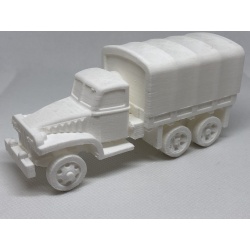Bestsellers
-
 Tank, Light, Mk VI
Tank, Light, Mk VI
 £6.99
£6.99
-
 Opel Blitz Truck
Opel Blitz Truck
 £9.99
£9.99
-
 GMC CCKW 2½-ton 6x6 truck (swb & lwb)
GMC CCKW 2½-ton 6x6 truck (swb & lwb)
 £8.99
£8.99
-
 Universal Carrier (Bren Gun Carrier)
Universal Carrier (Bren Gun Carrier)
 £6.99
£6.99
Latest Products
-
 Camionetta SPA-Viberti AS43 Reconnaissance Car
£6.99
Camionetta SPA-Viberti AS43 Reconnaissance Car
£6.99 -
 Autoblindo Fiat-Ansaldo AB611 armoured car
£8.99
Autoblindo Fiat-Ansaldo AB611 armoured car
£8.99 -
 Autoblindo Fiat-Ansaldo 40, 41 and 43 armoured cars
£7.99
Autoblindo Fiat-Ansaldo 40, 41 and 43 armoured cars
£7.99 -
 Aufklarer auf Fgst Panzer Pzkpfw 38(t)
£9.99
Aufklarer auf Fgst Panzer Pzkpfw 38(t)
£9.99 -
 Marder III
£10.99
Marder III
£10.99 -
 Nissan 180 Truck
£8.99
Nissan 180 Truck
£8.99 -
 Type 98 Ke-Ni light tank
£7.99
Type 98 Ke-Ni light tank
£7.99 -
 Otsu-Gata Sensha (Renault NC in Japanese Service)
£7.99
Otsu-Gata Sensha (Renault NC in Japanese Service)
£7.99
Flying Elephant Super-heavy tank
The Flying Elephant was a proposed super-heavy tank, planned but never built by the British during World War I.
After the last order for an additional fifty Mark I vehicles in April 1916, it was not certain that any more tanks were to be produced. Everything would depend on the success of the new weapon. William Tritton, co-designer and co-producer of the Mark I, thought he already understood what would prove to be its main weakness. A direct hit by a shell would destroy the vehicle, a major drawback on a battlefield saturated with artillery fire. Tritton decided to design a tank that would be immune to medium artillery fire in April 1916.
Tritton was unsure what this would entail. He did not know how thick the armour should be to ensure complete protection. The same month Lieutenant Kenneth Symes began to test 2 inch (51 mm) armour plate by firing at it with various captured German guns. In June, this programme was expanded by testing several types of plate at Shoeburyness, delivered by armour producer William Beardmore and Company. The Tank Supply Committee approved the production of a prototype on 19 June 1916, but the design was not to be finalised until late August 1916.[1]













